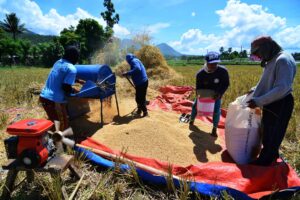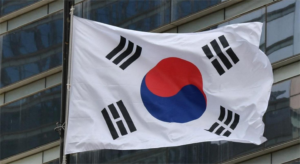Menu
Potential Rice Supply Shortage Looms in the Philippines Due to Delayed Harvests
- Junnel G
- May 6, 2024
- 1:21 am
- No Comments

The Federation of Free Farmers Cooperatives in the Philippines has issued a warning about a potential tightening of rice supplies starting in July and extending through September, commonly referred to as the lean months. This warning comes as the nation faces the ongoing challenge of El Niño, which is expected to delay the onset of seasonal rains and consequently push back rice planting and harvesting schedules.
Impact of El Niño on Rice Production
Traditionally, the Philippines experiences its planting season with the arrival of rains in late May, leading to harvests from October to December. However, with the current El Niño conditions, the state weather bureau PAGASA anticipates that these essential rains might arrive later than usual. This delay poses a significant risk to rice production timelines, directly impacting the availability of this staple food during the lean months when rice supply typically tightens.
Department of Agriculture’s Response
Despite the challenging conditions posed by the drought, the Department of Agriculture (DA) remains optimistic. Officials have noted that the major rice granaries of the country are still operational thanks to robust irrigation systems. The DA also highlighted that while there might be a reduction in this year’s rice harvest—projected to decrease by 100,000 metric tons—it represents less than 1% of the total expected harvest, which is estimated at 20.06 million metric tons.
Furthermore, the DA is prepared to address potential shortfalls through rice imports, ensuring that any decrease in local production does not critically impact the national rice supply.
Looking Ahead: Mitigation and Market Stability
The Federation of Free Farmers Cooperatives has expressed concerns that if the delays in rainfall and subsequent agricultural schedules persist, the situation could exacerbate the tightening of rice supplies during the critical lean months. This scenario could impact not only farmers but also consumers nationwide, potentially leading to increased rice prices and strained food security.
To mitigate these risks, authorities are considering several strategies, including the adjustment of rice tariffication laws to possibly lower rice prices by June and enhance market stability. Additionally, global rice market conditions remain stable, but weather-related risks continue to pose a threat to consistent supply chains.
Conclusion
As the Philippines navigates the challenges posed by El Niño, the collaborative efforts between the government and agricultural sectors are crucial in managing the potential impacts on rice production and supply. With strategic planning and robust infrastructure like effective irrigation systems, the country aims to withstand the adverse effects of delayed seasonal changes on agriculture.
The situation remains dynamic, and authorities are closely monitoring weather patterns and market conditions to adapt their strategies accordingly, ensuring the stability of rice supply in the Philippines throughout the year.
This proactive approach aims to safeguard the nation’s food security and stabilize rice prices, ensuring that the staple remains accessible and affordable for all Filipinos, regardless of climatic unpredictability.
#Top Tags COVID Covid-19 Technology Finance Investing Sustainability Economy

Subscribe to Our Newsletter and get a free pdf:




















No comment yet, add your voice below!